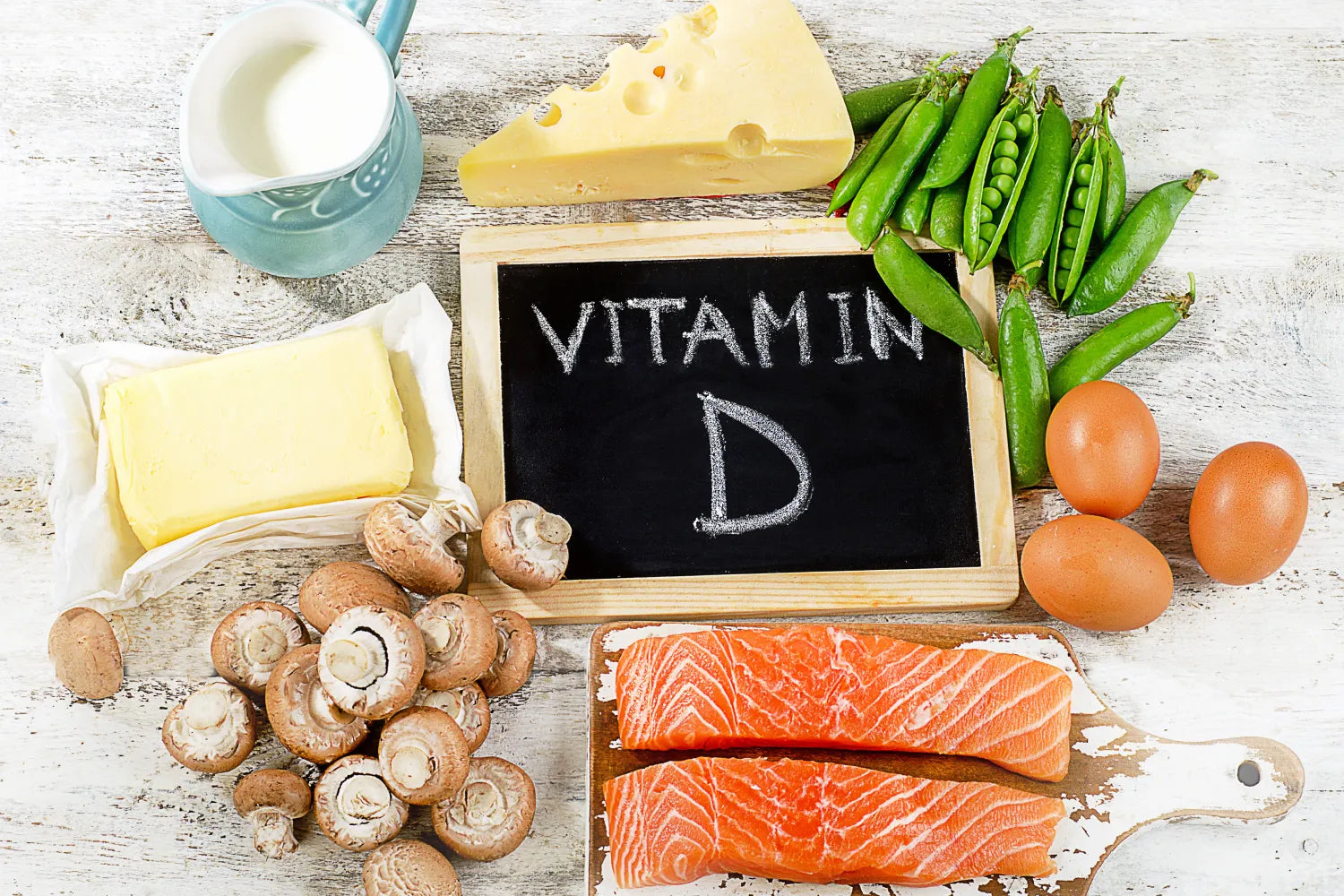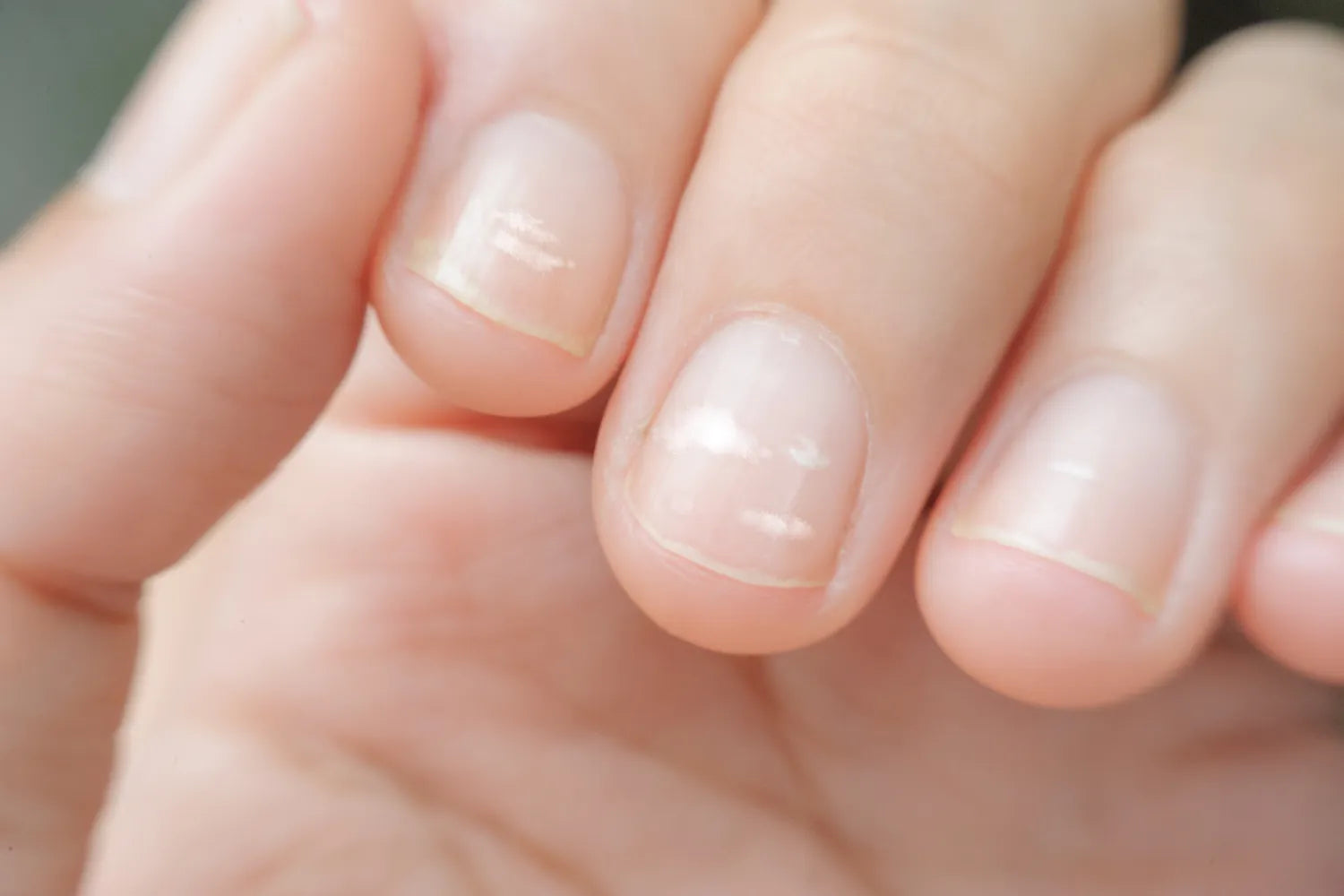Omega 3 Foods
Published by Dr. Venn-Watson

Dr. Eric Venn-Watson’s Highlights
-
Foods other than fish contain omega-3, but getting them into your diet may be difficult. Using an omega-3 supplement can ensure you get the proper amount of omega-3.
Omega-3 fish oil supplements have side effects and risks you should know about.
Taking a different essential fatty acid, like fatty15,may be a better way to support your long term health and wellness, while reducing unwanted side effects.
You want those omega-3s and know you can get them from food sources. Although fatty, oily fish are the go-to solution for obtaining this fatty acid, there are a plethora of other foods that contain omega-3 fats.
We’ll cover which foods are the best sources of omega-3 and also talk about using an omega-3 supplement. We’ll discuss all the information you need about omega-3 and introduce you to the newest essential fatty acid on the block, C15:0.
How Did Omega-3 Fatty Acids Become Health Supplement VIP?
Over 90 years ago, omega-3 and omega-6 fatty acids were discovered by a husband and wife research team. Since then, extensive research has been done about the potential benefits of omega-3s for cardiovascular health.
The claims are that the health benefits of omega-3 can support heart health, protect against heart arrhythmias, and at higher doses, can even lower cholesterol and blood pressure.
Cardiovascular disease is still the number one killer of Americans, so a supplement that shows any promise of protection against it is usually well received. Protecting against the risk of heart disease is the main reason most people begin taking a fish oil supplement.
However, taking a fish oil supplement or eating omega-3-rich foods doesn’t often solve the cardiovascular disease problem alone. Taking care of our bodies and guarding our hearts against disease and heart attacks requires a more comprehensive approach.
Exercise
The American Heart Association recommends that healthy and able adults get at least 150 minutes of cardiovascular exercise each week. They also recommend tossing in a few resistance training workouts to further support heart health, build strong bones, and keep your muscles functioning properly.
An active lifestyle is consistently associated with lower risks for heart disease, type 2 diabetes, high blood pressure, and even Alzheimer’s disease. If you have physical limitations, talk to your healthcare provider and get their medical advice about starting a movement program that is right for you.
Healthy Diet
Sure, eating omega-3-rich foods will help you get more omega-3, but that’s only one piece of the heart-healthy puzzle. In addition, your body needs foods high in vitamins, minerals, and antioxidants, like fruits and vegetables. You also need fiber, which helps regulate blood sugar levels and protects your heart health.
12 Foods With High Levels of Omega-3
Are you looking for ways to increase your level of omega-3 naturally? Here are 10 ways to get it on your plate.
1. Mackerel
This fatty, oily fish is topping the list with over 4,000 mg of omega-3 per serving. A delicacy in many countries, you can enjoy them smoked or broiled. If you’re pregnant or nursing, it’s best to avoid king mackerel, which can contain high levels of mercury.
2. Flaxseed Oil
You’ll get over 2,300mg of omega-3 in one serving of these tiny seeds. Swapping out your traditional cooking oil for flaxseed oil may make it easier to get the omega-3 you want in your diet.
3. Chia Seeds
At over 5,000mg of omega-3 per serving, chia seeds are tiny, blackish-gray seeds that are also an excellent source of protein. They’re also known for their high content of magnesium, an important mineral that helps keep your muscles and nerves functioning properly. Toss them on salads, oatmeal, or yogurt, or blend them into shakes and smoothies.
4. Sardines
Hear us out. These little canned fish pack a powerful amount of omega-3 and protein in a tiny serving. You’ll get over 1,000mg of omega-3 in the standard 3.5-ounce tin. If you’ve never tried sardines, give them a go. They make an excellent, healthy snack.
5. Anchovies
Rethink that unwanted pizza topping if you’re attempting to increase your omega-3 levels. Anchovies contain over 400mg of omega-3 per serving.
6. Canola Oil
Like flaxseed oil, canola oil contains omega-3 fatty acids. You’ll get over 1,000mg per serving and also get some omega-6 linolenic acid as well.
7. Soybean Oil
Soybeans are a good source of omega-3, registering a little over 600mg per serving. However, remember that they are also high in omega-6, which most experts agree isn’t healthful in large amounts.
8. Shellfish
Don't bypass the oyster bar the next time you head to the coast. Oysters themselves contain about 320 mg of omega-3 per serving.
9. Edamame
Edamame is an immature soybean. These beans contain about 280 mg of omega-3 per half cup. Enjoy them boiled or steamed for an omega-3 plant-based alternative.
10. Hemp Seeds
Hemp seeds or hemp seed oil contain 1,000 mg of omega-3 fatty acids per tablespoon. However, hemp seeds only contain one specific omega-3, ALA.
11. Brussels Sprouts
If you’re on the search for more plant-based sources of omega-3, look no further than Brussels sprouts. One cooked cup of these tiny cabbages contains 135 mg of ALA omega-3.
In addition, you’ll also get plenty of vitamin C, vitamin K, fiber, calcium, and folate. Not to mention, Brussels sprouts are absolutely loaded with potassium, coming in with 342 mg of this important electrolyte per cup.
12. Grains
While many grains contain omega-3 fatty acids, the problem is the processing. When grains are processed and made into breads and cereals, they lose much of their nutritional content. This is why you’ll often find cereals and other grain foods that have been fortified, which means the nutrients have been added back in during manufacturing.
The problem with fortification is that our bodies may not absorb the nutrients as well. Try wheat germ if you want to get the most omega-3 as possible in grain form. You can add this to yogurts and cereals or add it into a smoothie. It contains about 55 grams of omega-3 per 100 grams.
Unless you’re a Mediterranean diet devotee, you might find it challenging to incorporate three servings of fatty fish into your weekly diet. Even if you switch your cooking oil, you still might not get enough omega-3.
That’s because the requirement for obtaining the benefits of omega-3 is high, and even eating foods high in omega-3 still might not net you the omega-3 benefits you want. In addition, there could be risks of getting too much omega-3.
How Much Omega-3 Do I Need?
Research has continually suggested that for optimum omega-3 benefits, you must take at least 2,000 mg daily. Most people will need between 2,000-3,000 mg per day. It is often difficult to get that much from dietary sources of omega-3, which is why fish oil supplements are now one of the top 10 most popular supplements in the United States. This is where omega-3 gets a little tricky.
Which Omega-3 Fatty Acid Do You Need?
There are three main types of omega-3 fatty acids, and it’s easy to imagine that all of them are essential. The truth is, they aren’t.
The only essential type of omega-3 that your body needs is alpha-linolenic acid or ALA. This is the only omega-3 considered essential, meaning our bodies need it to thrive but cannot readily make it on their own.
This is interesting because, in the vast majority of studies of omega-3, the most promising heart-health benefits didn’t come from ALA but from eicosapentaenoic acid, or EPA. And then, only the purest, most highly concentrated form of EPA (without the inclusion of DHA, or docosahexaenoic acid, the third form of omega-3) showed protective heart benefits in adults.
Rancidity
Unfortunately, fish oil supplements have an Achilles heel. They are prone to oxidation and going rancid. If you open a bottle of fish oil supplements and they have a fishy smell, they are likely already rancid.
Omega-3 is a type of unsaturated fat, which means it is a liquid at room temperature. This means it is subject to lipid peroxidation. Like cooking oil that goes bad when it’s been in your pantry for too long, omega-3 fish oil supplements that have been sitting on a store shelf can go bad, too.
Independent researchers discovered that as many as one in 10 bottles of omega-3 supplements on store shelves are rancid before they’re purchased. The worst part? You probably won’t know if those cod liver oil supplements are rancid or not. The only indication they could be bad? A fishy odor, which is common with virtually all fish oil supplements.
Research is ongoing as to the impact of rancid fish oil supplements on the human body. A few studies have suggested that taking rancid fish oil supplements could have a negative impact on cholesterol levels. In animal studies, high doses of rancid fish oil were shown to be toxic.
Side Effects of Omega-3
Taking high amounts of omega-3 can produce side effects that may be dangerous for your health. Excessive consumption of omega-3 fatty acids could lead to low blood pressure, thinning of blood, excessive bleeding if an injury occurs, or increased risk of bruising.
Considering that you likely need between 2,000-3,000 mg daily, it could be possible to experience these side effects.
Cellular Protection
Omega-3 fatty acids EPA and DHA are integral parts of building cell membranes, but the problem is that they aren’t effective at keeping them strong. Because omega-3 is an unsaturated fatty acid liquid at room temperature, it’s also very pliable. Omega-3s get incorporated into our cell membranes, which causes them to be weaker and often leads to our cells breaking down prematurely.
Further, recent studies have shown that omega-3s at hgher doses were actually toxic to our cells. In one study, omega-3s were toxic to four out of 12 cell-based systems tested at the highest doses. Specifically, higher doses of omega-3 were toxic to lung and blood vessel cells.
These studies also found that another fatty acid, however, was better, broader, and safer at protecting our overall health, supporting our heart health, and strengthening our cells, allowing them to live longer.
C15:0 — An Upgrade From Omega-3
Although we have been told for decades that all saturated fats are bad for us, science now supports that that is not the case.
C15:0, an odd-chain saturated fatty acid, was recently discovered to be essential for the health of our cells and our overall health. It is important to note that an essential fatty acid is one that our bodies cannot make and, thus, we must get from our diet. The initial discovery was published in Nature Scientific Reports in 2020 and makes C15:0 the first essential fatty acid to be discovered since the omegas 90 years earlier. Since that time, the number of peer-reviewed publications supporting the benefits of C15:0 has grown considerably.
How C15:0 Was Discovered
Like the omegas, a husband and wife research team also discovered the benefits of C15:0. Interestingly, the initial discovery was made while studying longevity in two populations of bottlenose dolphins. The scientists found that when comparing populations of long-lived dolphins, one population had significantly lower occurrences of age-related illness. The population of dolphins with fewer chronic diseases had access to fish that contained higher levels of C15:0, which led the researchers to want to learn more about C15:0 and its benefits to both dolphins and humans.
They furthered their research and discovered that, like bottlenose dolphins, C15:0 was also beneficial and absolutely necessary for the protection and longevity of human cells.
Science now supports that higher levels of odd-chain saturated fatty acids, and specifically C15:0, are associated with better heart and overall body health. There are now calls to action to update current dietary guidelines to differentiate between good and bad saturated fats.
Further, higher levels of C15:0 have been shown to improve cholesterol levels, decrease LDL, and improve heart health.*
Elevate your cells. Elevate your self.
What Does C15:0 Do?
There are some important benefits of C15:0 you should know:*
- C15:0 is a sturdy fatty acid that integrates into cell membranes, keeping them fortified and strong. As we age, cell membranes can get weaker, and increasing our intake of C15:0 can keep our cell membranes functioning properly.
- Cellular homeostasis. C15:0 naturally binds to receptors found throughout our bodies, called PPARs (pronounced pee-pars), that help to regulate our metabolism, including cholesterol and glucose homeostasis.
- Increased mitochondria support. Our mitochondria don't function as well as we age, resulting in increased production of reactive oxygen species. Keeping our mitochondria healthy makes us healthier. C15:0 reduces reactive oxygen species and repairs mitochondrial function for a healthier you!
- Clearing damaged cells. When cells are damaged through oxidative stress, they can replicate the damage when new cells are created. By activating a molecule known as AMPK, C15:0 helps ensure that damaged cells are cleared.
- AMPK activation also helps C15:0 modulate functions like glucose uptake and immunity, helping recalibrate these functions and bring them back into alignment.
- C15:0 also helps regulate the body’s inflammatory response. In studies, it calmed and lowered pro-inflammatory cytokines, a key driver in aging. Ensuring the body’s inflammatory response is well maintained is important because an unhealthy inflammatory response is linked with multiple chronic illnesses.
- Increasing cellular energy. ATP is the energy molecule that cells use for energy currency. When ATP levels are low, cellular function slows, and it creates a ripple effect throughout the entire body. C15:0 increases cellular ATP levels. In one study looking at the growth of hair follicles, C15:0 was shown to increase cellular ATP levels by 350%.
C15:0 makes your cells stronger and helps reverse the cellular aging process, letting you enjoy a healthier, happier life no matter your age. In addition to healthy eating and plenty of exercise, taking it is one of the easiest and smartest things you can do to support your overall health.
C15:0 and the Mediterranean Diet
Another clinical trial was published in 2024, which showed that supplementing a Mediterranean diet with C15:0 improved the diet’s health benefits. The Mediterranean diet is followed by the majority of people in Blue Zones, the places in the world where people consistently live to be 100.
In this clinical trial, three groups of people were studied. The first group received a hypocaloric diet (a very low-calorie diet). The second group received a hypocaloric diet plus a Mediterranean Diet. The third group received a hypocaloric diet, the Mediterranean diet, and supplementation with C15:0.
Across the board, participants lost weight, experienced lower blood pressure, and better insulin regulation. The participants who were on the Mediterranean Diet experienced these health gains along with a greater reduction in body weight, BMI, lower liver fat, lower cholesterol and triglyceride levels, and lower liver enzyme GGT.
Interestingly, the participants who were supplemented with C15:0 experienced even greater benefits. In addition to all the benefits of a hypocaloric diet and the Mediterranean diet, adding C15:0 improved cholesterol levels and LDL levels, decreased total fat mass, decreased visceral adipose (fat) tissue, decreased subcutaneous adipose tissue, and improved the microbiome. In summary, supplementing a healthy diet with pure C15:0 makes healthy diets even healthier!
Skip the Fishy Pills and Get Fatty
You can find C15:0 in a pure, vegan form in only one supplement.
Introducing fatty15: the first and only supplement to contain FA15, the pure-powder, vegan-friendly, sustainably-produced, award-winning version of C15:0, the fatty acid that is 3 times better at supporting your cellular health than the purest form of omega-3 (EPA).*
Omega-3 fish oil supplements can go rancid, have questionable benefits, and can leave you with fishy indigestion. It is time to switch to an essential fatty acid that is safer for your cells, will not go rancid, and is more beneficial for your long-term health and wellness.
The future of essential fatty acids is here — fatty15. Learn more about the science behind this new essential fatty acid here, or dive right in and get started with your fatty15 trial kit here.
Sources:
Omega-3 Fatty Acids: An Essential Contribution | The Nutrition Source|Harvard.edu
Omega 3 Fatty Acids Health Sheet|ODS.NIH.gov
Dietary Supplement Use Reaches All Time High | Council for Responsible Nutrition
Revealed: many common omega-3 fish oil supplements are ‘rancid’|The Guardian.com
The FDA's new advice on fish: it's complicated|PubMed
Inflammation|National Institutes of Health.gov
American Heart Association Recommendations for Physical Activity in Adults and Kids

Eric Venn-Watson M.D.
CEO, Co-Founder
Senior Scientist, Co-Founder
Eric is a physician, U.S. Navy veteran, and Co-founder and COO of Seraphina Therapeutics. Eric served over 25 years as a Navy and Marine Corps physician, working with the special forces community to improve their health and fitness. Seraphina Therapeutics is a health and wellness company dedicated to advancing global health through the discovery of essential fatty acids and micronutrient therapeutics.
You May Also Like...
Recovery From Vitamin D Deficiency: What To Know
Most of us know there’s a lot of information swirling around concerning virtually every aspect of health and wellness. It can make it hard to determine whether or not a current trending piece of information is worth your consideration...
10 Signs of Vitamin Deficiency: What Your Nails Say
Most vitamin deficiencies are not incredibly common in developed countries, but they do still exist. Even in countries like the United States, it is possible for someone to develop a deficiency in a key vitamin or nutrient due to...


